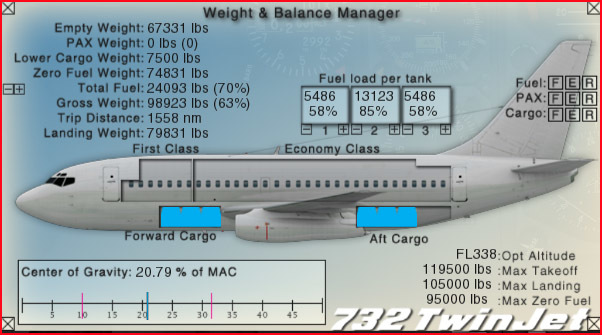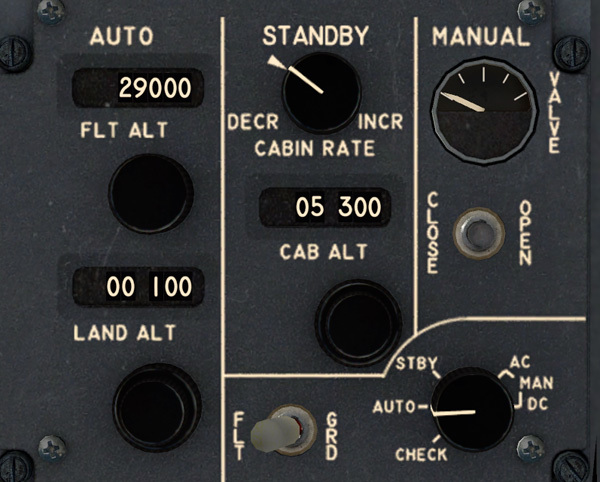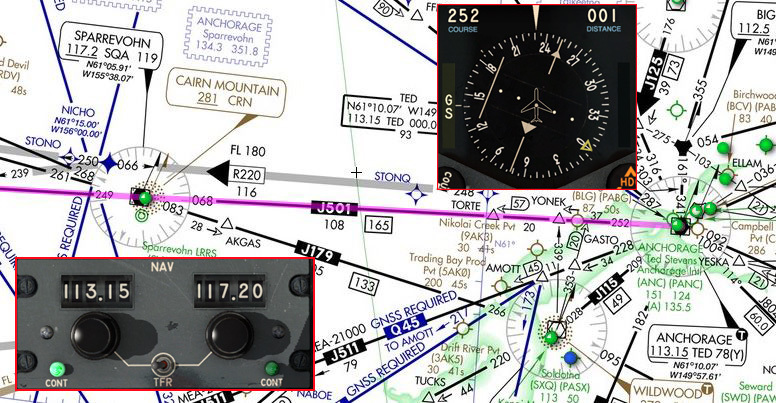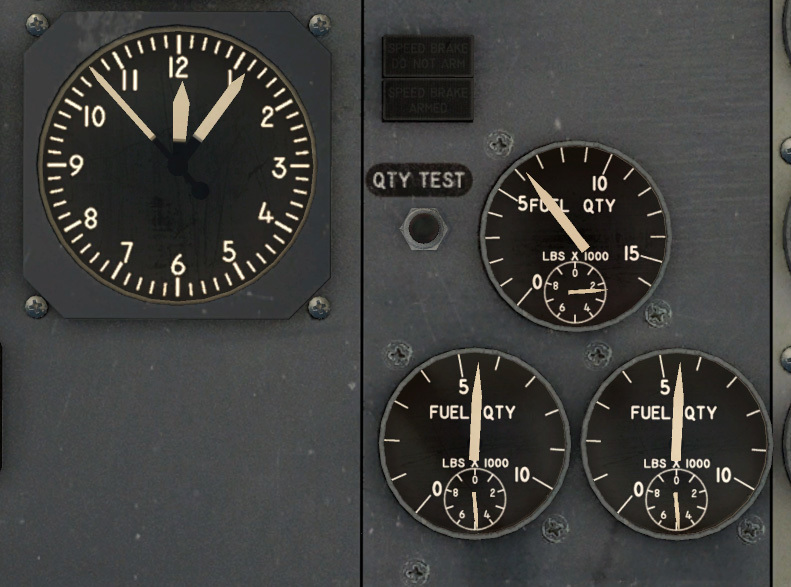After a nearly 7-hour flight yesterday, I spent the night in the EPOCH crash pad in Anchorage (PANC) before making my way back to the airport to hop another flight to the EPOCH main hub in Bethel (PABE). As luck would have it - a FlyJSims Boeing 737-200 in Alaska Air Cargo livery (by MB Liveries) was available for me to hop over to Bethel in. I can’t say enough good things about this B732 - it is an incredible aircraft for X-Plane with old school avionics and new school cockpit modeling. It is simply gorgeous and a joy to fly…
We carry a good load of cargo, no passengers, and enough fuel to make the trip to Bethel and back easily…

Our route will leave Anchorage (PANC) and pick up J501 off TED VOR, cross Sparrevohn VOR (SQA) enroute, then continue down J501 to Bethel VOR (BET). Since the 737-200 features old school avionics, we’ll be flying the route entirely with “green needles” on the Jet airways using our VOR radios.
After getting our engines up and running I start setting up the radios. We tune in 113.15 (TED) and set the J501 radial of 252 degrees. I also put the next VOR freq. in the standby (117.2 - SQA). Remember - the more work you do while sitting on the ramp and in dead moments of time, the less scrambling you will be doing later when it counts!
The FlyJSims 737-200 cockpit is a work of (functional) art…!
We taxi out to depart runway 15 since it is adjacent to the air cargo ramp. Our TOLD card shows our V-speeds and engine power setting (EPR) for our takeoff weight…
Throttles forward to the EPR setting and the virtual first officer calls out V1, VR, and V2… Off we go!
Aerosoft’s PANC does look great, despite the lack of static aircraft (I’m gonna fix that though!)…
Default X-Plane clouds and weather are quite good. I’m using real weather downloaded from current METARS and TAFS for my flying in Alaska to keep the challenge realistic…
The 737-200 flight director and autopilot panel is a joy to use. Simple, straight-forward, and allows for great control of the aircraft in all modes…
We hold 250 knots using the IAS hold (not an auto-throttle though…so remember it will pitch to maintain your commanded setting!) until breaking through 10K, then we accelerate up to 300 knots during the climb. Meanwhile we fly a heading to intercept J501…
Joining J501 in the climb away from Anchorage International…
Our initial climb and route takes us out over Cook Inlet as we climb through multiple cloud layers…
I set the pressurization controller to FL290 - our cruise altitude will be FL280 going westbound and set the cabin altitude to the recommended differential level for that altitude…

Through FL180 we go to 29.92" and our speed is settled on 300 knots as we climb toward our cruise of altitude of FL280. The altitude preselect is armed and we’ve captured our VOR course…
Through breaks in the clouds we see some spectacular scenery enroute… Soon, I’ll be winging my way VFR among some of those peaks! (If the interview goes alright!)
At FL280 I let the plane accelerate to Mach .78 then pull the power back to maintain that speed…
A really nice flight deck on this 737-200…
Again, being unfamiliar with the terrain I’m flying over, and not under ATC control, I elect to play conservatively. “Stay on the black lines on the chart, and you won’t run into anything…” said my CFI many, many years ago. So I check out the low enroute and see that the mileage break between SQA and BET occurs at around 92 miles. The MEA is 6000 until VIDDA intersection when it drops down to 3000 westbound. Thus, I start my descent at idle power over SQA VOR and settle at 6,000’ waiting for 40DME from Bethel…
At the mileage break, I switch to Bethel VOR and put the ILS 19R localizer frequency in the standby…
With multiple broken layers and the METAR reporting weather around the initial ILS approach altitude, I decide to stay on the “black lines” and shoot the full approach into Bethel…
At 40 miles, the enroute chart indicates I can descend further to 3,000’. I hit IAS hold and pull the power to idle to allow the nose to drop until we capture 3,000’…
Once we capture 3,000’, I set my heading bug to a right 90 degree turn in anticipation of starting the DME ARC to the ILS. I also set 1,800’ in the preselect but don’t disengage altitude hold yet. Now all I have to do is wait until a few miles from the ARC and hit HDG mode and IAS hold and pull the throttle to idle and the airplane will automagically turn and descend onto the arc…
Commencing the ILS DME Z RWY 19R. The reason I have to fly the ARC is that the ILS DME Y uses RNAV waypoints to establish on the ILS inbound course - something my -200 does not possess. That’s OK though, flying a DME ARC with an HSI and an RMI is a piece of cake…
We maintain a distance of 12 DME as we arc, keep the airspeed around 170 and start getting the aircraft dirty while we drop to the 1,800’ ARC altitude. Just keep the RMI needle off the wing and adjust your angles to widen or shallow the arc as necessary…
A few minutes later we’ve slowed to 145 and the 199 lead radial is indicating that we need to go ahead and turn inbound and switch frequencies to the ILS while monitoring the VOR course on the RMI (or the first officer HSI)…
As we make the turn, the ILS course comes alive. A sharp eyed reader will see a mistake here (that I catch about 30 second later)…
LOC captured, Glideslope armed and speed looks good…
At the initial approach altitude we are skimming through the bottom of the murk…
One dot below the glideslope…getting ready to capture…time to swing the gear…
We have the radar altimeter set to 200’ minimums and just prior we disengage the autopilot and hand fly the last few hundred feet…
With 6,400’ of runway, Bethel has plenty of room for the 737-200…
Spoilers, thrust reversers, and only minimal braking are required…
Pulling off the runway we clean up the aircraft and taxi to the ramp…
Elapsed time is 1+05 and we’ve only burned about 2300 lbs. of fuel…
Here we are! The green building is EPOCH’s operations building - wish me luck! (Beautiful EPOCH Bethel scenery available to registered users: HERE!)
BeachAV8R









































